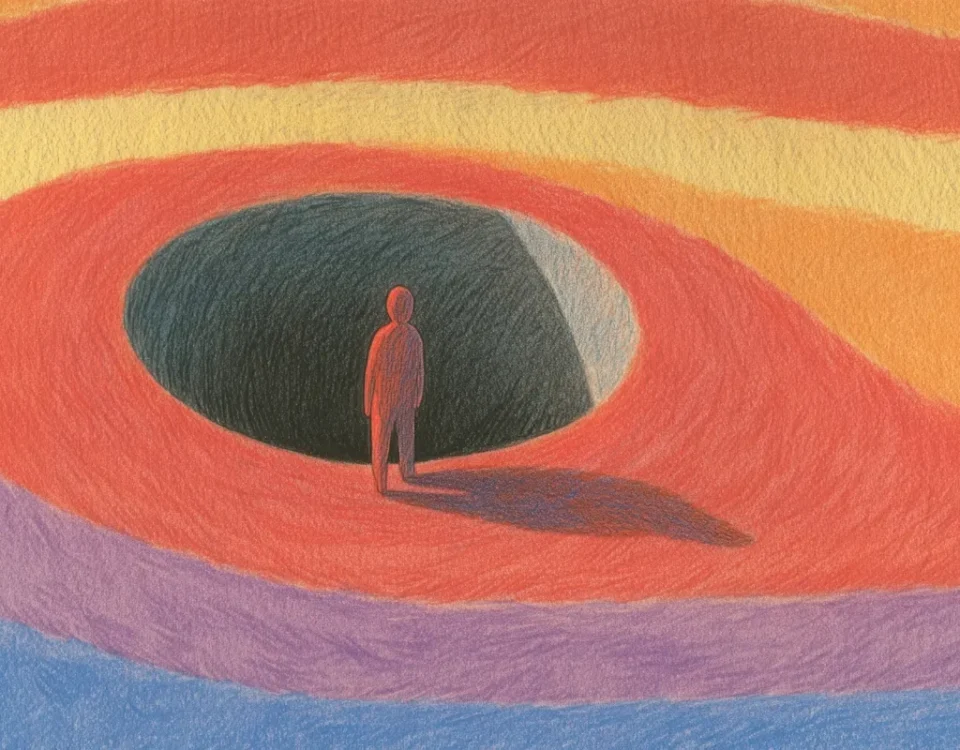
Mastering Stress and Anxiety in Medical School: Your Ultimate Guide
April 11, 2025
The Ultimate Guide to Acing Anatomy and Beyond in Medical School (2025)
April 11, 2025Summary (TL;DR)
Burnout is caused by chronic stress and manifests as emotional exhaustion, depersonalization, and reduced accomplishment—preventable with self-care and realistic goals. GAD involves persistent worrying, manageable through therapy, medication, and lifestyle changes like exercise and sleep hygiene.
OCD, especially Pure O, requires professional help, medication, and coping strategies like breathing exercises. Cognitive distortions, such as all-or-nothing thinking or catastrophizing, contribute to obsessive thoughts, which can be mitigated through Cognitive Behavioral Therapy (CBT). Early recognition, professional support, and sustainable habits are key to overcoming these challenges.
Medical school is a demanding journey, often accompanied by unique mental health challenges. This guide aims to provide an extensive overview of some common mental health issues faced by medical students—burnout, Generalized Anxiety Disorder (GAD), Obsessive-Compulsive Disorder (OCD), and obsessive thinking patterns—and offers strategies to manage and overcome them.
Understanding Burnout
Have you ever felt exhausted, unmotivated, unfocused, and just unable to do any work? These feelings tend to make one fall behind on work, cause delays on deadlines, and physically and emotionally drain the individual. When coming to the knowledge that one is suffering from burnout, their approach and mentality towards everything can change.
The National Academy of Medicine defines burnout as a syndrome characterized by a high degree of emotional exhaustion and depersonalization (i.e., cynicism), and a low sense of personal accomplishment at work. This definition is divided into three parts:
- Emotional Exhaustion: Where a person feels fatigued and tired from all the psychological stress they’ve put themselves under.
- Depersonalization: Where a person stops perceiving their reality as their own.
- Decreased Sense of Accomplishment: Where no matter how much effort is being put into work, the person does not feel like they’ve made a difference or improvement.
Burnout can be caused by chronic exposure to stress. Overworking oneself and not acknowledging signs to slow down, including depriving oneself of sleep, leads to this state of emotional, physical, and mental exhaustion.
Signs and Symptoms of Burnout
How do I know if I might be suffering from burnout? Burnout can manifest in many ways: some people get more physical symptoms such as nausea and stomach aches. Others get more emotional symptoms, such as the feeling of failure or demotivation. The signs and symptoms include:
- Long-term fatigue, regardless of the number of hours slept
- Increase in pain and tension
- Intellectual exhaustion
- The feeling of not being able to absorb information
- Apathy towards topics
- Unwillingness to study/work
- Decreased motivation
- Decrease in performance
- Increased irritability due to frustration
- Increased frequency of illness
- Feelings of anxiety and depression
- Lack of creativity and inspiration
If uncertain about experiencing burnout, take the simple Burnout Measure by Malach-Pines to find out.
Effects and Prevention of Burnout
Burnout can have both short-term and long-term effects. Short-term consequences include decreased job/study performance and overall physical and emotional distress. More severe future consequences include medical errors and clinician suicide.
A 2014 study by Golkar et al. states that patients with chronic stress are less capable of downregulating negative emotions, rendering them more susceptible to depressive symptoms.
Prevention is always better than cure. Make changes to everyday habits before transitioning into full-blown burnout. Small changes over a long time are much better than a complete transition over a short time. Consider setting reasonable goals, sticking to deadlines, eating healthy, exercising more, sleeping 7-9 hours per night, socializing, taking plenty of breaks, setting time for enjoyment, managing time effectively, learning to say no, going outside for a change of scenery, and even taking a vacation.

Managing Generalized Anxiety Disorder (GAD)
Anxiety is our body’s natural response to a perceived threat. For our ancestors, this response would trigger a fight-or-flight reaction, potentially saving them from predators. Today, without such immediate physical dangers, a rush of anxiety often only leads to discomfort, sometimes manifesting as frequent trips to the bathroom.
What is GAD?
Generalized Anxiety Disorder is defined as persistent, excessive, and uncontrollable worrying over everyday events. For those affected, relaxation is elusive. Even when trying to unwind, intrusive thoughts can strike unexpectedly, pulling them back into a state of worry. This constant mental turmoil is difficult for anyone but can be especially challenging for medical students.
Seeking Professional Help and Therapy
Seeing a psychiatrist is an essential first step. If struggling with symptoms but don’t have a formal diagnosis, consult a mental health professional. GAD often comes hand-in-hand with other conditions (such as social anxiety, panic disorder, or depression), and it’s crucial to understand your full mental health picture. Also, ruling out physical conditions (like hyperthyroidism) that mimic anxiety symptoms is important.
Once diagnosed, therapy can help manage daily emotions and thoughts. Cognitive Behavioral Therapy (CBT) teaches coping skills and helps identify triggers for your anxiety. Tracing anxiety back to its sources can make it much easier to manage.
Adhering to Medication and Lifestyle Changes
If prescribed medication, take it as directed. If hesitant about starting medication, share concerns with your doctor and seek a second opinion if needed. Your doctor will likely start with a low dose, adjusting it as necessary. Exercise, while sounding generic, is incredibly beneficial. Not only does it release endorphins, but it also helps sleep better. Establishing a good sleep routine is crucial, avoiding work or study in bed, minimizing screen time before sleep, and limiting sugary snacks.
Avoid overworking yourself. In my first two years of medical school, I pushed myself to the limit, fueled by anxiety-driven adrenaline. But after starting therapy, I learned to take a more sustainable approach. My grades dipped slightly, but my mental health improved.

Navigating Obsessive-Compulsive Disorder (OCD)
Obsessive-compulsive disorder is often talked about in popular media, yet most people still fail to grasp that there is much more to it than just repeating certain physical rituals. Only 20% of patients actually have physical compulsions; the rest have Pure O, or Pure OCD, where the mind entertains compulsive thoughts on a loop.
Recognizing Symptoms and Seeking Professional Help
OCD starts in young adulthood for most people. Reflect upon what you’re feeling. The first person who’ll catch you is yourself, not a professional. Although googling symptoms could be helpful, it can also go very wrong. After getting an official diagnosis, realize that it is OCD that has been crippling you all this time.
Medication and Breathing Exercises
After your doctor diagnoses you, he may offer to start you on medication according to the severity of your illness. Don’t shy away from medication; it is a lifesaver. Educate yourself about the side effects if you have to, but know that medication is what will kickstart your recovery. Deep vagal breathing works wonders when a troubling thought sprouts up. Meditation helps one be mindful of the current moment and the fact that they are separate from their thoughts.
Self-Encouragement and Resilience
Last but not least, always keep in mind that you are fighting two battles at the same time. You are stronger than you think you are. Give yourself applause where you deserve it. Know that most people would not survive in your shoes. Understand that academic accolades are not above mental health, and tell yourself that it’s okay to fall off the wagon once in a while. As long as you remember to get back up, even if not immediately, it’s okay because one day you will.
Differentiating Healthy Thinking vs. Obsessive Thinking
Envision the following scenario: you’re in college or at work, and you run into a friend during break time. You greet them in a cheery manner, only to receive a solemn nod in return. You try making small conversation, but they respond in a rather dry manner. Now, there are two ways your brain can analyze and interpret the situation above:
- “I wonder what was up with Sam. He seemed pretty distant today. Maybe he has some personal problems going on.”
- “Sam seemed so angry at me today! What have I done to him? He must hate me now.”
The example above provides a stark difference between healthy thought patterns and obsessive thought patterns.
Cognitive Distortions and Fixes
A person with an unhealthy thought pattern usually falls prey to cognitive distortions. Here are some common distortions and fixes:
- All or Nothing Thinking: Be realistic. It is impossible to get through life without failing a test or without having a falling out with a loved one. Remind yourself that this is a minor problem and that it does not change anything in the grander scheme of things.
- Overgeneralization: Find perspective. Many people have bad relationships and then go on to find their one true love. Suspend your judgment.
- Personalization: Ponder upon what else could have contributed to the situation. Remove yourself from the center of the universe, and look for other logical explanations.
- Mind Reading: Understand that there’s a good chance your guesses are wrong. Get more information, if possible.
- Mental Filtering: Examine your filters. Are you only focusing on the times when the evidence matches your core set of beliefs? Become more aware of the ‘positive’ events.
- Emotional Reasoning: Allow the feelings to subside before you form any opinion or take any action. Reassess the situation from a neutral point of view.
- Catastrophization: Consider less terrifying explanations. Try examining the evidence available to you.
Although these fixes help greatly, they are still not a definitive cure for obsessive thinking. However, Cognitive Behavior Therapy tackles the root cause of mental health disorders—the destructive thinking patterns that cause them.
Conclusion
Navigating medical school with mental health challenges is tough but not insurmountable. By recognizing symptoms early, seeking professional help, adhering to treatment plans, and adopting lifestyle changes, one can manage and mitigate the impacts of burnout, GAD, OCD, and obsessive thinking patterns. Remember, prevention is better than cure, and small changes over time lead to significant improvements. Keep pushing forward, and know that you are stronger than you think!

Topic FAQs
Take Your Medical Education to the Next Level with Physeo
Whether you're preparing for Step 1, Step 2, or striving to become a more confident and compassionate physician, Physeo is here to support your journey. Our resources are designed to help you master complex concepts, stay motivated, and achieve your goals.
📚 Unlock Premium Study Tools
Dive into our comprehensive video lessons, image mnemonics, and proven study plans tailored for success. Check out Our Plans to explore subscription options and find the perfect plan for your needs.
💡 Stay Inspired with Our Blog
Looking for tips on excelling in medical school, overcoming burnout, or balancing life as a student or professional? Check out our Blog. It’s your go-to resource for actionable advice and stories from fellow medical students and professionals.
📺 Boost Your Learning with Our YouTube Channel
Prefer learning through videos? Subscribe to our YouTube channel for free tutorials, step-by-step explanations, and expert insights to help you ace your exams and thrive in your medical career.
📱 Connect with Us on Social Media
Stay updated, inspired, and connected with Physeo across our social media platforms:
- Instagram: Follow us on Instagram for daily motivation, study tips, and behind-the-scenes content.
- Facebook: Join our community Here for updates, discussions, and support.
- LinkedIn: Connect with us professionally at LinkedIn for industry insights, career advice, and networking opportunities.
🚀 Ready to Excel?
Invest in yourself and your future patients by joining the Physeo community today. Let’s work together to create a generation of healthcare providers who lead with knowledge and compassion.
Start Your Journey NowAuthor
Noon Hagmusa and Abu Huraira Khan
Content Creators
Latest articles
Our newsletter
- Work-Life Balance
- USMLE Prep
- Study Tools
- Stress Management
- Spaced Repetition
- Residency Applications
- Physeo
- Personal Growth
- Pathology Education
- OB/GYN Specialty
- Nutrition
- Neuroscience
- Mental Health
- Medical School Tips
- Healthcare Innovation
- Global Health
- Fitness & Wellness
- Faith & Medicine
- Doctor-Patient Relationships
- Creativity in Science
- Career Planning
- Anatomy Mastery












